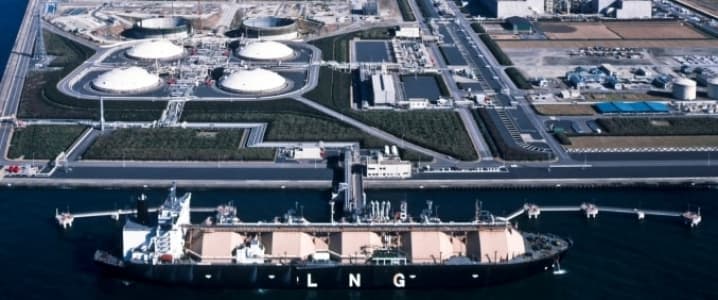Japan, the world’s largest liquefied natural gas (LNG) exporter, has come a long way in just a few years in formulating an LNG markets playbook. The country has pivoted from being at the mercy of cost-intensive and restrictive long term LNG supply deals, mostly from Qatar, that even prevented the country from reselling the super-cooled fuel to now being both a secondary seller of the fuel as well as getting ready to build out LNG infrastructure in the Asia-Pacific region, which represents around two-thirds of global LNG demand, with that demand projected to increase going forward.
A few weeks ago JERA, Japan’s largest importer of natural gas, said it was going long in LNG in other parts of Asia. “We want to undertake LNG receiving terminals in Vietnam and Thailand, ”said Satoshi Onoda, who formally became JERA’s new president on April 1. “We will expand our growth by deploying our strength of undertaking [a value chain] from LNG procurements to electricity generation to Asia,” he said, according to a report in the Tokyo-based Nikkei Asian Review.
In order to regain control over both exorbitant prices and unfavorable contract conditions just a few years ago, two of Japan’s largest electric utilities, Tokyo Electric Power (Tepco) and Chubu Electric formed JERA, a JV intended to combine both firms buying power to be able to strike more favorable deals. Spot prices for LNG in Asia had spiked to an economically damaging $20 per million British thermal units (MMBTU) in early 2014, which created both fiscal and trade problems in energy-dependent Japan.
LNG demand in Japan had spiked following the 2011 Fukushima nuclear disaster that eventually saw all of Japan’s 50 nuclear power plants shut down. Japan had to turn to then costly LNG to offset the loss of nuclear power for electricity generation. Japan’s strategy to wrest back control over LNG markets eventually worked, although it was helped by ample supply hitting the market from new LNG projects in first Australia and then the U.S.
Within a few years not only had the JV secured better LNG contractual terms but the group started trading the super-cooled fuel, a proposition that was unthinkable just a few years earlier. LNG markets, for their part, have also pivoted from a shortage to a severe supply overhang that is projected to last until the mid part of the next decade, though increased LNG demand from China could shorten that overhang projection by a number of years.
JERA is also increasing its operations in Singapore, which has become the LNG trading hub in Asia, The JV already has footholds as an independent power producer (IPP) in Thailand and Vietnam. JERA is the world’s leading LNG purchaser, importing 35 mtpa of the fuel. Tepco and Chubu Electric also fully integrated their fuel and thermal power generation businesses under JERA on April 1, creating an energy giant that accounts for half of Japan’s thermal power generation.
Southeast Asian LNG ambitions
Though Thailand already has an operational LNG receiving terminal with another 9 mtpa receiving terminal planned to help offset the loss of domestic gas production in the Gulf of Thailand, Vietnam’s LNG sector still doesn’t have a working LMG terminal even though reports from within the country indicate that one could be ready to receive gas by the mid part of the next decade.
There have also been discussions between Vietnam and the U.S. for American companies to help Vietnam jump start its LNG sector. Vietnam faces a severe gas shortage due to its economic growth and increased population. Moreover, it has ample offshore natural gas reserves it could develop, but to date those efforts have been thwarted at least twice by China which has prevented the country from exploring for and producing gas within its own UN-mandated 200 nautical mile exclusive economic zone (EEZ).
By Tim Daiss for Oilprice.com
More Top Reads From Oilprice.com:


















